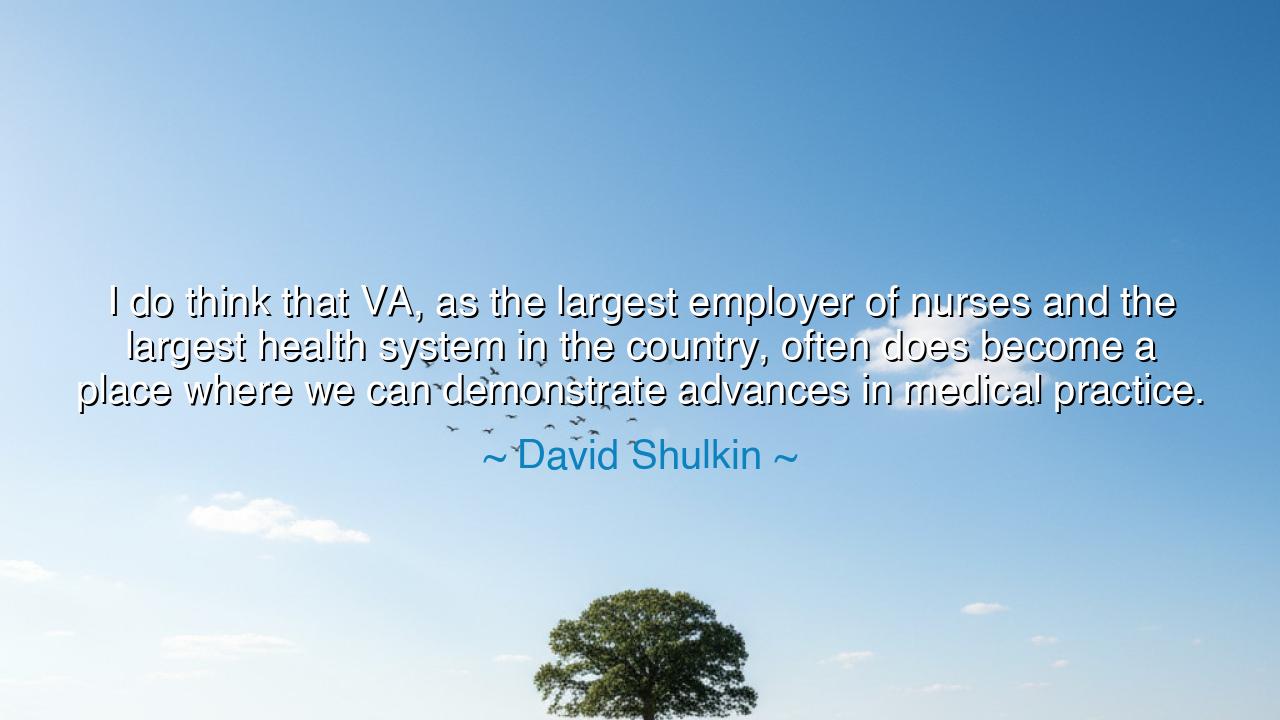
I do think that VA, as the largest employer of nurses and the
I do think that VA, as the largest employer of nurses and the largest health system in the country, often does become a place where we can demonstrate advances in medical practice.






Hear the words of David Shulkin, physician and steward of the nation’s veterans, who once declared: “I do think that VA, as the largest employer of nurses and the largest health system in the country, often does become a place where we can demonstrate advances in medical practice.” In these words there is both pride and purpose. He points to the Veterans Affairs health system (VA), vast in reach and noble in mission, not only as a refuge for those who bore the burdens of war but as a crucible where new forms of healing are tested and revealed.
The origin of this truth lies in the nature of the VA itself. As the largest health system in America, serving millions of men and women who once defended their nation, it carries a unique responsibility. Its size gives it strength, its mission gives it meaning, and its history gives it weight. With thousands of nurses, physicians, and staff, it holds the power not merely to treat illness, but to lead in advances of medical practice. Shulkin’s words remind us that greatness does not always arise from the private sphere; sometimes it is the public institution, born of duty and service, that becomes the wellspring of innovation.
The ancients would have recognized this principle. In Rome, the legions not only defended the empire but pioneered techniques of engineering, logistics, and organization that later nourished civilian life. So too, the VA, built to serve warriors, has often pioneered advances that later spread across the nation: prosthetic technology, treatments for post-traumatic stress, models of integrated care. In this way, the soldier’s suffering has paradoxically become the seed of healing for all humanity.
Consider the story of the development of the first electronic medical records within the VA. Long before they became common in private hospitals, the VA pioneered this practice, ensuring continuity of care for its millions of patients. What began as a necessity within a sprawling system became a model for others. Here we see the truth of Shulkin’s words: the VA is not only a caretaker of veterans, but a demonstrator of progress, pushing forward the boundaries of medicine for the whole nation.
The meaning of his words is therefore twofold. First, he honors the VA as a place of immense scale and potential, not merely a caretaker but a leader. Second, he reminds us that innovation often arises from responsibility. When a system is entrusted with the lives of so many, it must innovate or falter. Out of necessity, new practices are born; out of devotion, they are refined; and out of success, they are shared with the world beyond.
The lesson for us is clear: do not overlook the power of institutions that serve the common good. Where many see bureaucracy, there may lie hidden engines of progress. And when we face the question of how to improve healthcare, let us not always look to private wealth or individual genius alone, but also to the collective work of those who serve millions. For in the VA we see proof that size, duty, and compassion can become the forge of innovation.
Practical action flows from this truth. Support institutions like the VA, not only as providers of care but as laboratories of progress. Demand accountability so that innovation continues to serve its true purpose: the well-being of patients. Learn from their successes and apply them broadly. And on a personal level, honor the contributions of nurses and caregivers within these systems, for they are the living hands through which innovation touches lives.
Thus, Shulkin’s words endure as both testament and call. The VA is not only the guardian of those who bore arms, but the herald of practices that shape the future of medicine itself. Let us see it not merely as a system of care, but as a beacon, where the trials of the few become the breakthroughs that uplift the many. For in serving veterans, it demonstrates what is possible for all, and in advancing medicine, it carries forward the eternal duty of healing.






AAdministratorAdministrator
Welcome, honored guests. Please leave a comment, we will respond soon